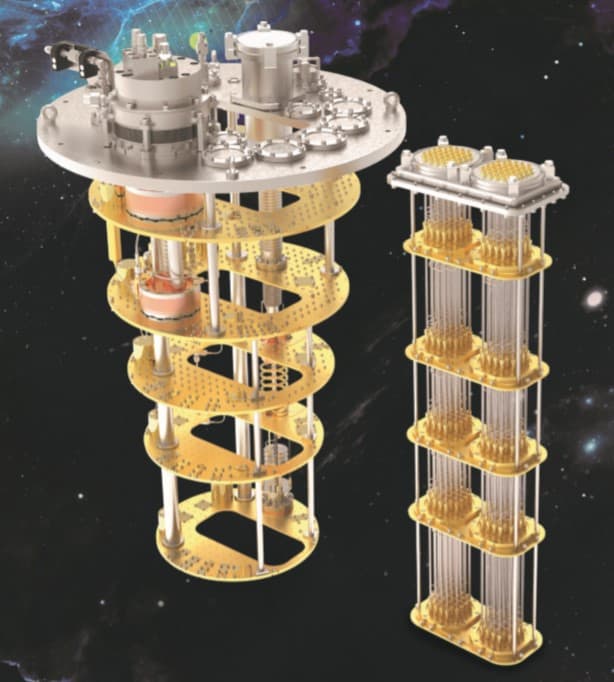As the global physics community comes together for the March Meeting of the American Physical Society, we look at the equipment innovations that will drive future research.
Editor’s note: this meeting was cancelled on 29 February 2020 due to concerns over the spread of coronavirus COVID-19

The world’s largest meeting of physicists will get underway in Denver, Colorado, at the beginning of March. More than 10,000 attendees will gather for the March Meeting of the American Physical Society, which promises to deliver a packed scientific programme as well as plenty of opportunities for networking, exploring options for careers and professional development, and catching up with colleagues and friends.
One highlight this year will be the Kavli Foundation Special Symposium on machine learning and quantum computation. Speakers include John Preskill from Caltech, Michelle Girvan from the University of Maryland, Google’s Patrick Riley, and Roger Melko from the University of Waterloo. During the session Eun-Ah Kim from Cornell University will also describe how machine learning has been used by her group to analyse complex experimental data derived from quantum matter.
All the exciting new research presented at the meeting would not be possible without the latest generation of experimental instrumentation, and the meeting’s technical exhibit will enable delegates to discuss their specific requirements with representatives from more than 150 companies. Many equipment vendors will be introducing new devices and systems designed specifically for cutting-edge physics research – some of which are detailed below.
A modular approach to next-generation cryogenics
Oxford Instruments, a pioneer in the development of cryogen-free dilution refrigerators, has released a next-generation system that provides a step change in modularity and adaptability for ultralow-temperature experiments in condensed-matter physics and quantum computing.

The Proteox system has been fully redeveloped to provide a single, interchangeable, experimental unit that can support multiple users and a variety of experiments. This is achieved by a side-loading “secondary insert” module that allows samples, communications wiring and signal-conditioning components to be installed and changed whenever necessary.
“Our development team has recognized that to optimize for such a wide range of applications, adaptability needs to be designed in as the very foundation of the system,” says Matt Martin, engineering director at Oxford Instruments NanoScience. “This configurability allows us to offer more tailored solutions and experimental set-ups on standard lead times, and also provides our customers with maximized future-proofing against changing requirements in a dynamic research landscape.”
The system features a web-based software control system to provide remote connectivity as well as powerful visualization capabilities. Improved control is achieved by a patented gas-gap heat-switch system that actively adjusts the thermal conductivity between experimental plates.
This is the first release of a new family of Proteox dilution refrigerators that will all share the same modular layout to provide cross-compatibility and added flexibility for cryogenic installations.
Visit Oxford Instruments at Booth #1611 to find out how the Proteox system could help your research.
Ultracold experiments made simple
ICEoxford offers a range of cryogen-free cryostats that have been designed to take large experimental heat loads, which makes them perfect for everyday research and low-temperature experiments with quantum-based technologies.

The latest addition to the range is the DRY ICE 0.8K Benchtop Cryostat, an upgrade from the DRY ICE 1.2K Benchtop. The new model combines continuous operation over the temperature range of 0.8 K to 425 K with a large sample space and a compact benchtop design.
With a cooling power of more than 400 mW at 2 K and above 80 mW at 1.7 K, the cryostat can reach its base temperature within 12 hours.
Various options are available, including five different window materials for optical access, custom wiring, and several alternative magnet technologies. Piezo-driven XYZ positioners, stacks and rotators can also be integrated into the cryostat.
Visit the ICEoxford team at Booth #1510 to explore their full range of research cryostats.
Complete solution delivers easy Hall analysis
Lake Shore Cryotronics will be demonstrating a new tabletop station for rapid, convenient Hall analysis that exploits the company’s patented FastHall measurement technology. The FastHall Station is a complete solution for researchers who are looking for a cost-effective way to add state-of-the-art Hall measurement capabilities to their lab.

In addition to a 1 T permanent magnet, high-precision sample holder, and a PC with application software, the station includes Lake Shore’s unique MeasureReady M91 FastHall measurement controller, which the company says is faster, more accurate and more convenient than traditional Hall solutions.
The M91 automatically executes measurement sequences, and provides better measurements more quickly – up to 100 times faster in many cases – especially when working with low-mobility materials. The M91 controller is also available as a standalone instrument for integrating into Hall measurement systems with existing electro or superconducting magnets.
You can find out more about the M91 at Booth #1101, along with Lake Shore’s full range of measurement and control solutions for low-temperature and magnetic-field conditions.



